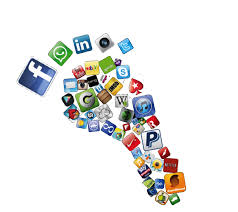Ah, the 1980s—a time of neon lights, big hair, and an explosion of pop culture that still influences the digital world today. One of the biggest game-changers of the decade? MTV. Launched on August 1, 1981, MTV didn’t just revolutionize music—it redefined how content was marketed, setting the foundation for what we now recognize as viral marketing.
The Birth of a Music Revolution
Before MTV, music was primarily an auditory experience. Sure, there were live concerts and televised performances, but the idea of promoting music through dedicated visual storytelling was still in its infancy. Enter MTV, with its 24/7 music video format, turning musicians into visual icons overnight. Suddenly, it wasn’t just about how a song sounded—it was about how it looked, felt, and connected with
audiences visually.
The Original Viral Content
Think about it: before YouTube, TikTok, or Instagram Reels, music videos were the first form of viral content. A compelling video could skyrocket an artist to stardom in days. Michael Jackson’s Thriller, Madonna’s Like a Virgin, and Duran Duran’s Hungry Like the Wolf weren’t just songs—they were cultural phenomena fueled by visual storytelling. These videos weren’t just played; they were discussed, analysed, and mimicked—just like today’s viral social media trends.
MTV’s Influence on Modern Digital Marketing
What MTV pioneered in the ‘80s directly influenced today’s content-driven digital marketing strategies:
- Branding Through Storytelling: Artists crafted personas that extended beyond their music—Madonna wasn’t just a singer; she was a fashion and cultural icon. Today, brands do the same through influencers and narrative-driven marketing campaigns.
- Visual-First Content: The flashy, high-production music videos of the ‘80s paved the way for today’s visual-centric platforms. Whether it’s Instagram’s curated aesthetic, TikTok’s short-form videos, or YouTube’s deep-dive content, the principle remains the same—strong visuals create engagement.
- Word-of-Mouth & Social Sharing: MTV made music videos must-see events, much like how viral content spreads through social media today. People recorded their favourite videos on VHS tapes, discussed them at school, and mimicked dance moves—mirroring the way memes and trends
spread online. - Cross-Promotion & Merchandising: MTV artists understood the power of multi-channel branding. Michael Jackson had Pepsi endorsements, Madonna had her own fashion line, and these cross-promotions helped cement them as more than musicians—just as influencers today use brand partnerships to expand their reach.
MTV’s Legacy in the Digital Age
While MTV itself has shifted away from its original format, its impact remains undeniable. The idea of using captivating video content to drive engagement, connect emotionally with audiences, and create cultural moments is exactly what today’s digital marketers strive to do. From Super Bowl commercials to influencer-driven TikTok challenges, the DNA of ‘80s MTV is alive and thriving in the modern digital space.
So next time you’re scrolling through a trending music video or viral challenge, just remember—you’ve got the ‘80s and MTV to thank for laying the groundwork. Long live the golden era of music videos!





